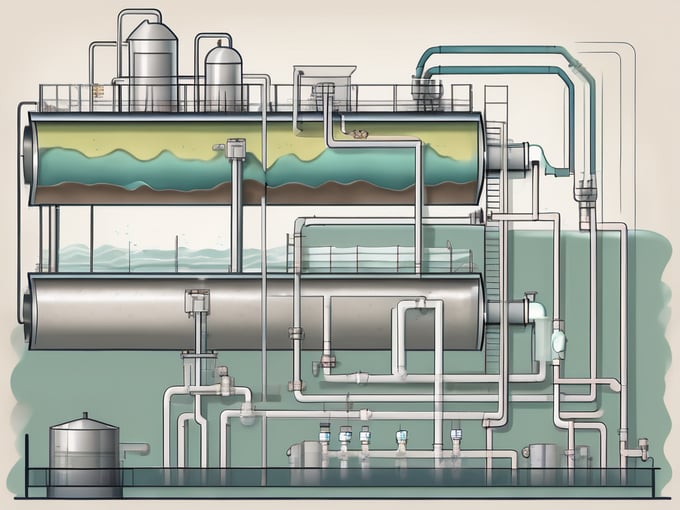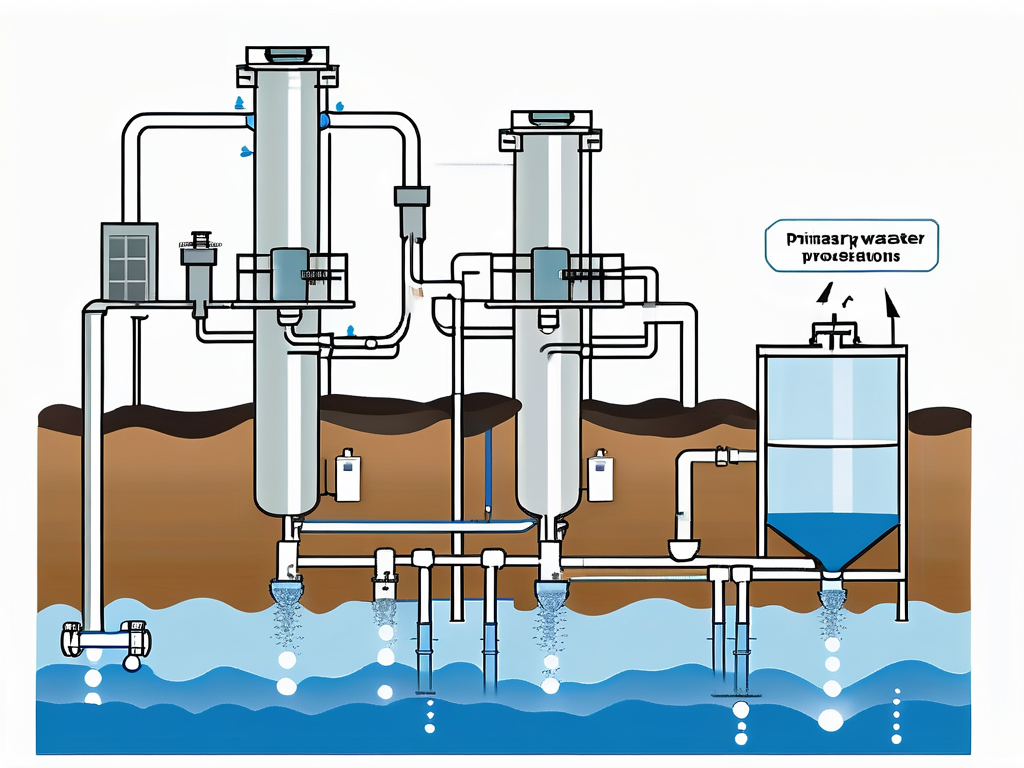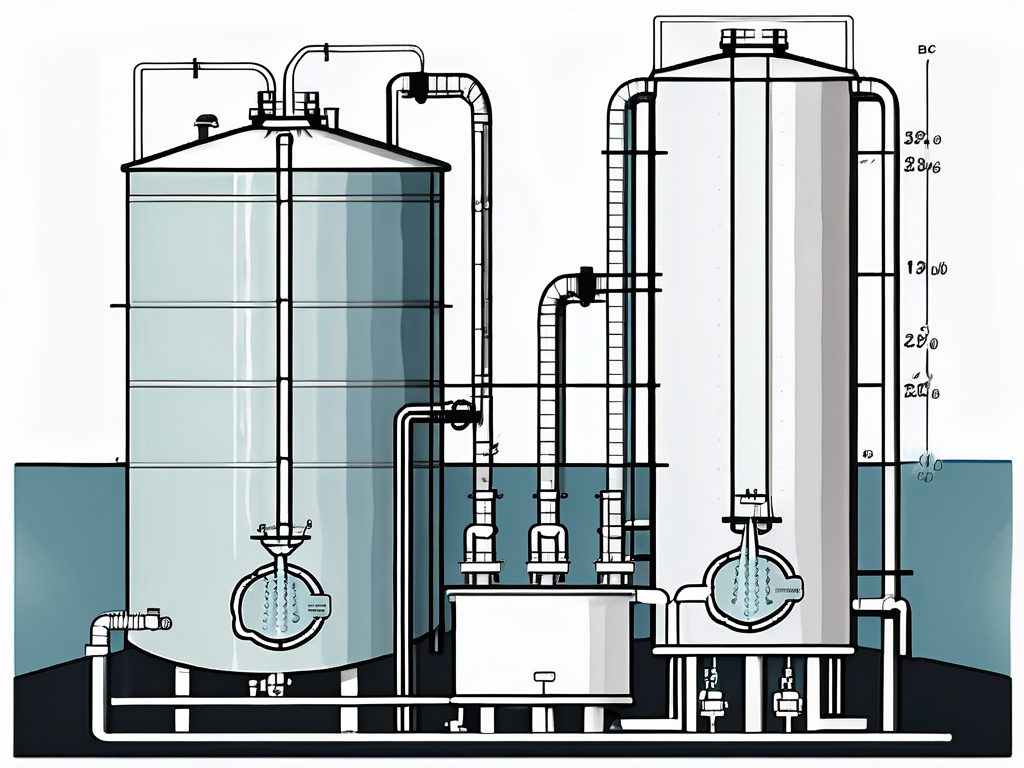
Primary Settling Tank: Wastewater Treatment Explained
The primary settling tank, also known as the primary sedimentation tank or primary clarifier, is a crucial component in the wastewater treatment process. This tank is designed to remove suspended solids, organic matter, and other particulates from wastewater before it undergoes further treatment. The primary settling tank operates based on the principle of sedimentation, where gravity aids in the separation of solids from the liquid.
The primary settling tank is typically the second step in the wastewater treatment process, following preliminary treatment which involves screening and grit removal. The effectiveness of the primary settling tank can significantly influence the efficiency of subsequent treatment processes, making it a critical component in the overall wastewater treatment system.
Design and Operation of Primary Settling Tanks
The design of primary settling tanks can vary depending on the specific requirements of the wastewater treatment plant. However, most tanks share some common features. They are typically large, rectangular or circular in shape, and have a depth that allows for effective sedimentation. The tanks also include mechanisms for the removal of settled solids, typically in the form of a sludge scraper or similar device.
The operation of the primary settling tank involves the inflow of wastewater at one end, and the outflow of clarified water at the other. As the wastewater flows through the tank, solids settle to the bottom due to gravity. These settled solids, known as primary sludge, are then removed and sent for further treatment or disposal.
Rectangular vs. Circular Tanks
Rectangular and circular primary settling tanks each have their own advantages and disadvantages. Rectangular tanks, for example, are easier to construct and can be built to accommodate larger volumes of wastewater. However, they may not be as efficient at removing solids as circular tanks due to the potential for short-circuiting, where wastewater bypasses the full length of the tank.
Circular tanks, on the other hand, are typically more efficient at removing solids due to their design, which promotes a more uniform flow of wastewater. However, they can be more difficult and costly to construct, especially for larger capacities. The choice between rectangular and circular tanks will depend on the specific needs and constraints of the wastewater treatment plant.
Role in Wastewater Treatment
The primary settling tank plays a critical role in the wastewater treatment process. By removing suspended solids and organic matter from the wastewater, it reduces the load on subsequent treatment processes, such as secondary treatment and disinfection. This not only improves the efficiency of these processes, but also helps to reduce the overall cost of wastewater treatment.

In addition, the primary settling tank also contributes to the production of biosolids, which are a byproduct of the wastewater treatment process. These biosolids, which are rich in nutrients, can be further treated and used for purposes such as soil amendment or energy production.
Removal of Suspended Solids
The primary settling tank is designed to remove suspended solids from wastewater. These solids, which can include particles of organic and inorganic matter, can cause problems in subsequent treatment processes if not removed. For example, they can clog filters or interfere with biological treatment processes.
The removal of suspended solids in the primary settling tank is achieved through sedimentation. As the wastewater flows through the tank, the solids settle to the bottom due to gravity. The settled solids are then removed as primary sludge, leaving behind clarified water that can be sent for further treatment.
Production of Biosolids
The primary sludge removed from the primary settling tank is a source of biosolids. These biosolids, which are rich in organic matter and nutrients, can be further treated and used for various purposes. For example, they can be composted and used as a soil amendment, or they can be anaerobically digested to produce biogas, a renewable source of energy.
The production of biosolids from primary sludge not only provides a valuable resource, but also helps to reduce the volume of waste that needs to be disposed of. This can result in significant cost savings for the wastewater treatment plant.
Factors Influencing the Performance of Primary Settling Tanks
Several factors can influence the performance of primary settling tanks in removing solids from wastewater. These include the hydraulic loading rate, the solids loading rate, the temperature of the wastewater, and the characteristics of the solids themselves.

The hydraulic loading rate refers to the volume of wastewater that is processed by the tank per unit of time. A higher hydraulic loading rate can result in a shorter detention time, which may reduce the effectiveness of sedimentation. The solids loading rate refers to the mass of solids that is processed by the tank per unit of time. A higher solids loading rate can lead to a higher concentration of solids in the tank, which can also reduce the effectiveness of sedimentation.
Temperature and Solids Characteristics
The temperature of the wastewater can also affect the performance of the primary settling tank. Higher temperatures can increase the rate of sedimentation, while lower temperatures can decrease it. This is because the viscosity of water, which affects the settling velocity of solids, decreases with increasing temperature.
The characteristics of the solids themselves, such as their size, shape, and density, can also influence their settling velocity and thus the performance of the primary settling tank. For example, larger and denser solids will settle faster than smaller and less dense solids. Similarly, solids that are irregular in shape will settle slower than those that are spherical.
Maintenance and Troubleshooting of Primary Settling Tanks
Regular maintenance and troubleshooting are essential for the efficient operation of primary settling tanks. This can include routine inspections to check for signs of wear or damage, regular cleaning to remove accumulated solids, and periodic testing to monitor the performance of the tank.
Common problems that can occur with primary settling tanks include the accumulation of solids, the formation of scum, and the growth of algae. These problems can reduce the effectiveness of the tank in removing solids from wastewater and can lead to issues in subsequent treatment processes.
Accumulation of Solids
The accumulation of solids in the primary settling tank can reduce its capacity and effectiveness. This can occur if the removal of settled solids is not efficient, or if the solids loading rate is too high. Regular cleaning and maintenance can help to prevent the accumulation of solids.
Signs of solids accumulation can include a decrease in the clarity of the effluent, an increase in the concentration of solids in the effluent, or a decrease in the depth of the tank. If solids accumulation is suspected, the tank should be inspected and cleaned as necessary.
Formation of Scum and Algae Growth
The formation of scum, which is a layer of floating solids, can occur in the primary settling tank if the removal of settled solids is not efficient. Scum can interfere with the sedimentation process and can lead to a decrease in the clarity of the effluent. Regular skimming or removal of scum can help to prevent this problem.
Algae growth can occur in the primary settling tank if it is exposed to sunlight. Algae can interfere with the sedimentation process and can also cause odor problems. Covering the tank or using algaecides can help to control algae growth.
Conclusion
The primary settling tank is a critical component in the wastewater treatment process. It serves to remove suspended solids and organic matter from wastewater, reducing the load on subsequent treatment processes and contributing to the production of biosolids. The design, operation, and maintenance of the primary settling tank can significantly influence the efficiency and cost-effectiveness of the overall wastewater treatment system.
Understanding the role and functioning of the primary settling tank, as well as the factors that can influence its performance, can help to ensure the effective and efficient treatment of wastewater. This not only protects public health and the environment, but also contributes to the sustainable management of water resources.



